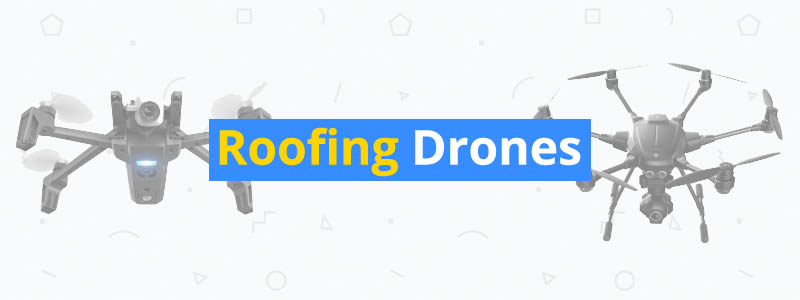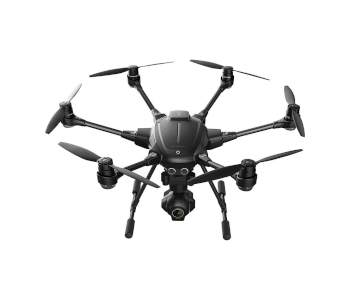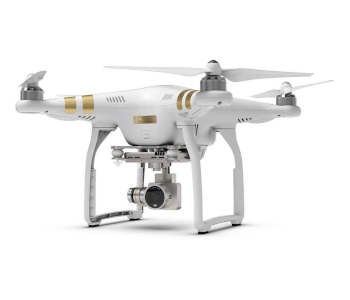6 Excellent Drones for Roof Inspections
Why clamber up onto a roof to check its condition when you don’t have to? Some roofs are more dangerous than others, and not all people can get up there anyway. Using a drone for roof inspections makes light work of a potentially risky job. It also lets you check the work of a professional roofer. This way you get to make sure they’ve done the exact job they’re charging for.
Likewise, contractors can also save time and money by using drones to inspect roofs. Camera quads can be an invaluable and convenient tool for busy roof mechanics. They identify the exact location and type of damage that needs attention. Drones are ideal for quick post-storm assessments too.
Another function is to use unmanned aerial vehicles (UAE) for temperature inspections. You can check the roof for temperature leaks (hot or cold) by fixing thermal equipment to the drone.
| Budget |
|---|
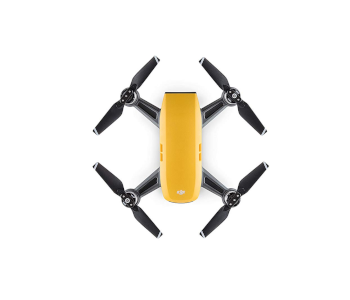 |
| DJI Spark Camera Quad |
| 4.6/5.0 |
| Flight time: 16 minutes |
| Flight Range: 1.2 miles |
| Bright color, FPV ready, gimbal stabilization, 1080p video, 12MP stills, long range. |
| Check Amazon |
| Best Value |
|---|
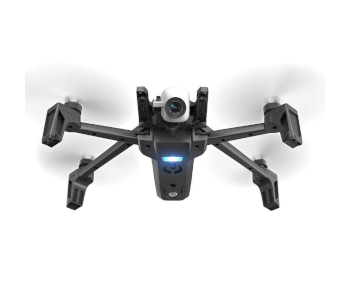 |
| Parrot Anafi Camera Quad |
| 4.4/5.0 |
| Flight time: 25 minutes |
| Flight Range: 2.5 miles |
| Easy to use, 4K HDR video, quality stills, three-axis stabilization, long flight time. |
| Check Amazon |
| Top Pick |
|---|
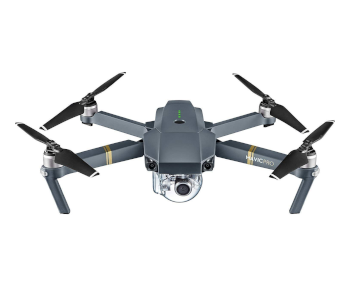 |
| DJI Mavic Pro Camera Quad |
| 4.7/5.0 |
| Flight time: 27 minutes |
| Flight Range: 4.3 miles |
| Obstacle avoidance, precision hover, long flight time, long range, DJI GO 4 app. |
| Check Amazon |
Drone Considerations for Roof Inspections
Drones have multiple practical applications, and roof inspections are just one of many. There are certain things to look for in these flying robots to ensure they’re up for the job.
The seven main considerations for a roof inspection drone include:
- Flight stability
- First Person View (FPV) capability
- Built-in GPS
- Aerial camera
- Flight time
- Flight range
- Waypoints
Consumer drones are not all equal even though some look very similar.
What You Need to Know
What you don’t know, don’t be afraid to ask. A good drone can last for years with proper care, so get the most suitable model right off the bat. Let’s look at each of the above considerations.
Flight stability
First Person View (FPV)
Built-in GPS
The Aerial Camera
Flight Time
Flight Range
The Benefit of Waypoints
About this Guide
This guide shows 6 capable roof inspection drones for homeowners and contractors. There’s something here for all budgets and situations. Each mini-review covers the specifics mentioned in this introduction. All models but one are camera quadcopters and selected based on the following criteria:
- Personal research and experience of drones and drone technology
- The opinions of industry experts
- Feedback from real users; people who have bought and used the products
The table below shows the roof inspection drones as they appear on the page. The first three are Best Budget, Best Value, and the Top Pick in that order. The ones below those are by price, low to high.
Drones for Roof Inspections Comparison Table
| Make and Model | Flight time | Flight Range | Price |
|---|---|---|---|
| DJI Spark, Mini Camera Drone | 16 minutes | 1.2 miles | Check Price |
| Parrot Anafi Portable 4k Camera Quadcopter | 25 minutes | 2.5 miles | Check Price |
| DJI Mavic Pro Fly More Combo | 27 minutes | 4.3 miles | Check Price |
| Yuneec Typhoon H Pro 4K Camera Hexacopter | 25 minutes | 1 mile | Check Price |
| DJI Phantom 3 Professional Bundle | 23 minutes | 1.24 miles | Check Price |
| DJI Inspire 2 Camera Quad Starters Bundle | 27 minutes | 4.3 miles | Check Price |
1. DJI Spark, Mini Portable Camera Drone | Best Budget
Editor’s Rating: 4.6/5
The DJI Spark is the Best Budget pick and a great little drone for roof inspections. It’s an easy quad to launch and simple to control. Use it to check the condition of roof shingles or potential damage.
- Best feature 1: Small and agile for roof inspections
- Best feature 2: Easy to use flight controls
- Plus points: Bright color, FPV ready, gimbal stabilization, 1080p video, 12MP stills, long range
- Minus points: Mediocre flight time, occasional patchy WiFi, noisy
DJI’s mini Spark comes in four colors and the one here is sunrise yellow. The color helps pilots to see it easily against overcast skies. It checks all the right boxes as an affordable home inspection quad.
The DJI Spark as a Roof Inspection Drone
The Spark is small, agile, has First Person View (FPV), and is user-friendly. These things make the Spark an excellent choice for home roof inspections. You can use any modern smartphone or tablet screen to see what the camera sees as it flies over and around your roof. The Spark uses advanced HD WiFi to transmit clear 720p real-time video up to a range of 1.2 miles (2km).
The quad’s 2-axis mechanical gimbal and UltraSmooth technology help to keep the footage steady. The Spark is also quite crash-resistant though its detachable props are on the brittle side.
Recreational Uses for the DJI Spark
There are plenty of other uses for the DJI Spark aside from property inspections. You can use DJI Goggles for a truly immersive FPV experience (not included). The small size of this camera quad also makes it an ideal drone for people on the move. Pilots can quickly launch the quad from the palm of their hands and control it using hand gestures. That’s ideal for flying and filming at close quarters.
The Spark fits easily into a bag. It sports intelligent flight modes and guarantees pleasing aerial footage. It’s not 4K, but the photos and vids are of a quality that people enjoy and love to share.
The Not So Good
The flight time is 16 minutes max. That’s plenty of time for most roof inspections on a single charge. Alas, 16 minutes is on the short side for recreational flying and filming. Most recreational pilots factor the cost of one or two extra flight batteries into the price. Some users report spotty WiFi though local environment can also have an impact on that. Even so, the problem is still evident among some pilots.
The final gripe is the noise this little quad makes. The sound is more of an issue for people who fly the drone close by, like when using hand gestures for example.
| Tech Specs |
|---|
| Dimensions: 5.6 x 5.6 x 2.2” |
| Product Weight: 0.66 lbs. |
| Camera: Fixed 12MP 1080P 30fps |
| Stabilizing gimbal: 2-axis (pitch & roll) |
| Max Flying Time: 16 minutes |
| Max Range: 1.2 miles (2 km) |
| Battery: Intelligent Flight 11.4 V 1480 mAh LiPo |
| Charging Time: 90-minutes |
| The Pros |
|---|
| Small and agile, ideal for home roof inspections |
| Easy to use flight controls |
| Bright color, easy to see |
| First Person View (FPV) ready |
| Gimbal stabilization |
| Decent quality video/stills |
| Decent flight range |
| The Cons |
|---|
| Mediocre flight time |
| Occasional patchy WiFi |
| Noisy, high-pitched whine |
2. Parrot Anafi Portable 4k Camera Quad | Best Value
Editor’s Rating: 4.4/5
The Best Value roof inspection drone goes to the foldable Parrot ANAFI camera quadcopter. It’s super-easy to deploy, simple to use, and a perfect drone for all kinds of pursuits.
- Best feature 1: Tiltable zoom camera for filming under and over structures
- Best feature 2: Ultra compact design
- Plus points: Easy to use, 4K HDR video, quality stills, three-axis stabilization, long flight time
- Minus points: No obstacle avoidance, long charging time, high cost of batteries
The Parrot ANAFI weighs less than a pound and has a convenient ultra-compact design. Its folding structure makes it easy to store and transport. Let’s look at its benefits as a roof inspection drone.
The Parrot ANAFI as a Roof Inspection Drone
The clearer the video and stills, the easier it is to inspect roofs with more accuracy. Well, the Parrot ANAFI is a perfect drone for property and construction inspections. It has a 3-axis stabilization system, high-quality 4K HDR video, and high-definition 21MP photos. Now add the user-friendly flight controls and the ANAFI guarantees footage with remarkable clarity.
It also has a 90-degree tiltable camera. The adjustable lens lets pilots fly under to look up, and fly above to look down as necessary. The camera has a valuable digital zoom function. The zoom is perfect for recording footage in tighter spaces from safer distances.
Recreational Uses for the Parrot ANAFI
Smaller, more affordable, quieter drones are coming out all the time to meet demand. The Parrot ANAFI is now one of the most user-friendly, mid-quality drones for fun and travel. There’s been a lot of care put into this palm-sized flying robot right down to the boxing and extras. It’s a superb choice for novice pilots who want to jump in at the deep end with a quality camera quadcopter.
The 25-minute flight time, simple zoom function, and automated flight modes add to its simplicity. And the compact Skycontroller 3 foldable remote has an impressive 2.5 miles (4km) range.
The Not So Good
The Parrot ANAFI is relatively new in drone terms so more cons may materialize over time. There are only two obvious shared gripes right now. One is the lack of obstacle avoidance technology, and the other is the long charging times. Battery charging can take anywhere between 2–3 hours depending on the power source. The good news is that the drone comes with a bonus battery, so that’s two in total.
| Tech Specs |
|---|
| Dimensions: 10.9 x 4.9 x 8.7” |
| Product Weight: 1lb. |
| Camera: 21MP 4K HDR Zoom |
| Stabilizing gimbal: 3-axis Hybrid |
| Max Flying Time: 25 minutes |
| Max Range: 2.5 miles (4km) |
| Battery: 7.6V 2700 mAh 2S LiPo |
| Charging Time: 2–3 hours depending on the power source |
| The Pros |
|---|
| 180° tiltable gimbal camera w/ hybrid stabilization technology |
| Ultra-compact, foldable design |
| Easy to use at beginner level |
| High-quality video and stills |
| Long flight time |
| Long flight range |
| Dolly Zoom effect |
| Bonus battery included |
| Compact, foldable controller |
| Compatible with several different charging devices |
| The Cons |
|---|
| No obstacle avoidance |
| Long charging time |
| High cost of spare batteries |
3. DJI Mavic Pro Camera Quad Fly More Combo | Top Pick
Editor’s Rating: 4.7/5
You don’t need the DJI Mavic Pro if you’re a homeowner who only wants a drone for roof inspections. It’s an excellent choice if you want a camera quad for recreational and practical use.
- Best feature 1: Compact, foldable, powerful camera quad
- Best feature 2: 12-megapixel, ultra HD 4K gimbal camera
- Plus points: Obstacle avoidance, precision hover, long flight time, long range, DJI GO 4 app
- Minus points: 28mm average-wide lens, high cost of batteries
The DJI Mavic Pro’s 4K camera quality produces incredibly smooth and detailed videos. The stills are equally as impressive. That makes the Mavic Pro an excellent drone for marketing purposes.
The DJI Mavic Pro as a Roof Inspection Drone
Professional roofers need to advertise their services like any other construction workers. The more impressive the portfolio, the more likely they are to win that next contract. Well, the DJI Mavic Pro can shoot quality stills and video close-up, far away, and from exciting angles. Use this drone to make striking BEFORE and AFTER footage of your work.
Expert roofers with an updated online presence and social media accounts are rarely out of work. A picture paints a thousand words, as the quote goes, and it’s true. The high-quality Mavic Pro has outstanding optics, obstacle avoidance, and is easy to use. It can be an indispensable tool of the trade.
Consider the Mavic Pro to inspect roofs from afar on large estates and farms. It has an FPV transmission range of up to 4.3 miles (7km), a top speed of 40mph, and a 27-minute flight time.
Recreational Uses for the DJI Mavic Pro
Amateur and skilled drone pilots can get a lot out of the DJI Mavic Pro. It’s hard to beat as a lightweight, portable, high-quality camera quad for shooting aerial video and stills. It’s simple to learn and easy to fly at any level. The quality of the footage is outstanding for such a small camera quad. Long flights, FPV, and an incredible range allow pilots to explore previously out of reach places.
For roofers, the Mavic Pro is an excellent tool. Videographers interested in producing cinematic quality film have newer options, though. They are the Mavic 2 Pro and the Mavic 2 Zoom.
The Not So Good
There are camera drones with wider angle lenses than the DJI Mavic Pro here. It has a 28mm 78.8° field of view (FOV), but that’s not ultra-wide. It’s something to think about if you need a broader view. The other downside is the high cost of Intelligent Flight Batteries. They’re not as expensive as some models, but the 90-dollar average price tag is not cheap either.
| Tech Specs |
|---|
| Dimensions: 32.7 x 78 x 1.2” |
| Product Weight: 1.62 lbs. |
| Camera: 12MP 4K UHD |
| Stabilizing gimbal: 3-axis |
| Max Flying Time: 27 minutes |
| Max Range: 4.3 miles (7km) |
| Battery: Intelligent Flight 11.4 V 3830 mAh 3S LiPo |
| Charging Time: 90 minutes |
| The Pros |
|---|
| Compact, foldable, and powerful camera quad |
| High-quality gimbal camera |
| Effective obstacle avoidance |
| Precision hover |
| Long flight time |
| Long flight range |
| Intuitive DJI GO 4 app |
| The Cons |
|---|
| 28mm average-wide lens |
| High cost of batteries |
4. Yuneec Typhoon H Pro 4K Camera Hexacopter
Editor’s Rating: 4.5/5
The Yuneec Typhoon H Pro is a high-quality 4K multipurpose camera hexacopter (six rotors). There are some excellent reviews and online videos to illustrate its use as a roof inspection drone.
- Best feature 1: 360 Panoramic views
- Best feature 2: ST16 Pro all-in-one controller (no mobile device needed)
- Plus points: Easy to pilot, 4K video, collision avoidance, 8 flight modes, failsafe features
- Minus points: Spotty GPS, short range for a drone in its class
Being a hexacopter means the Yuneec Typhoon H is bigger than most camera quadcopters. It’s something to think about for roof inspections in built-up areas with tight spaces.
The Typhoon H as a Roof Inspection Drone
The Typhoon H checks a lot of boxes as a roof inspection drone. The video quality is phenomenal for one. It guarantees high-quality, stabilized footage from the 360° gimbal. There are other conveniences of the 360° gimbal than the Panoramic views. A 360-degree rotation lets you steady the drone and focus on the camera. Moving the camera is easier than continually repositioning the hexacopter.
The 4K UHD video and 12MP stills ensure the footage you get is clear, smooth, and detailed. The only real downside is the size of this bird. It does have obstacle avoidance and navigates obstruction well, though. Still, most homeowners who want something for routine roof inspections won’t need a hexacopter. A smaller quad for random checks and a little recreational fun is a more practical choice.
Other Uses for the Typhoon H
Yuneec Typhoon H is an excellent camera drone for filmmakers and aerial photographers. It offers lots of everything for professional and commercial applications. It can look daunting to anyone used to flying smaller quads, but looks can be deceptive. It’s a comfortable and safe machine to operate even for advanced beginners. It’s smooth, stable, 5-rotor capable, and sports a bunch of flight modes.
Here are some of its pilot-friendly intelligent tasks:
- Orbit Me
- Point Of Interest (POI)
- Journey (as far out as 150ft.)
- Curve Cable Cam
- Follow Me/Watch Me
- Dynamic Return to Home
The ST16 Pro all-in-one controller has an integrated 7-inch Android touchscreen. That’s handy as you don’t need to use a smartphone or tablet to control the drone or tweak its settings.
How many YouTube videos have you watched where unsightly landing gear comes into view? That’s not an issue with the Typhoon H’s thanks to its fully retractable landing gear. Flight time is a decent 25 minutes on a full charge. Batteries take about two hours to recharge which is a long average.
The Not So Good
How good or bad GPS is can depend on several factors. However, there is enough user feedback to know that it’s an issue with some owners. GPS is a valued drone feature, but it’s not one of this hexacopter’s best points. The other downside is the control range. The 1 mile (1.6km) range is more than adequate for most pilots. But it’s still short compared to other drones in its class and even below.
| Tech Specs |
|---|
| Dimensions: 220.2 x 16.5 x 12.6” |
| Product Weight: 4.29 lbs. |
| Camera: 12.4MP 4k UHD |
| Stabilizing gimbal: 3-axis gimbal |
| Max Flying Time: 25 minutes |
| Max Range: 1 mile (1.6km) |
| Battery: 3.6V 8700mAh 31.32Wh Li-ion |
| Charging Time: 2 hours |
| The Pros |
|---|
| Stable flyer, easy to control |
| Exceptional quality footage |
| 360° 4K gimbal camera |
| Fully-retractable landing gear |
| Touchscreen Android controller |
| Smart flight modes |
| Decent flight time |
| Collision avoidance system |
| The Cons |
|---|
| Spotty GPS |
| Low-average control range for a drone in its class |
| Long-average charging time |
5. DJI Phantom 3 Professional Camera Quad Bundle
Editor’s Rating: 4.5/5
You can’t go wrong with a DJI Phantom when it comes to reliability and ease-of-use. The Phantom 3 Pro Camera Quad Bundle here has everything an amateur or pro needs for roof inspections.
- Best feature 1: First Person View (FPV)
- Best feature 2: 4K UHD 3-axis gimbal-stabilized camera
- Plus points: Easy to fly, live view, responsive controls, steady hover, indoor/outdoor flier
- Minus points: Slow flier, no obstacle avoidance
The DJI Phantom 3 camera quad is an excellent choice for roof checks and buildings inspections more generally. It’s also a fantastic recreational drone when it’s not filming property.
The DJI Phantom 3 Pro as a Roof Inspection Drone
Anyone who wants an easy-to-fly roof inspection camera quad has it with the Phantom 3 Pro. The experience is enjoyable and straightforward from the takeoff through to the safe landing. The drone automatically handles the complexities of reliable and stable flying so that you don’t have to.
DJI’s Phantom 3 Professional is an oldie but goodie. It’s an affordable roof inspection drone for homeowners and businesses. There are several reasons it makes an excellent quad for property inspections. The 4K UHD FPV 3-axis camera produces footage of exceptional clarity. That means no squinting or confusion over the live view imagery it transmits to your screen or goggles.
The drone moves with smooth accuracy and has a precise and stable hover. DJI’s Go App gives pilots easy access to autonomous flight modes and camera controls. The app lets you track the quad’s exact location on a live map for roof inspections further away. A simple tap of a finger is all it takes to bring the bird back to base after a successful mission.
Other Uses for the DJI Phantom 3 Professional
Enthusiasts of aerial photography and videography love the Phantom 3 Pro. It lacks some of the newer features found on the Phantom 4, but it’s still an excellent quadcopter. The reliability, build quality, and crash-resistance is exceptional. It’s not a drone that suffers too many crashes though, not even at the beginner level. It’s what some refer to as a loveable and stable workhorse of the sky.
We’ve all seen the online 4K travel & adventure videos and stunning 12-megapixel aerial stills. These proud vids are the stuff of YouTubers. They show the footage of real users, and that speaks volumes about the product. The Phantom 3 Pro quad never loses track of its location on those outdoor pursuits. That’s thanks to its GLObal NAvigation Satellite System (GLONASS) and GPS.
The Not So Good
There are two downsides to the DJI Phantom 3 Professional. One is that it’s a slow flying drone compared to others. That can prove frustrating as pilots gain experience and want to fly faster and further afield. The other downside—also a con for roof inspections—is the lack of obstacle avoidance (OS). No OS does help to improve a one’s piloting skills, though.
| Tech Specs |
|---|
| Dimensions: 18 x 13 x 8” |
| Product Weight: 2.82 lbs. |
| Camera: 12MP 4K UHD Video |
| Stabilizing gimbal: 3-axis (tilt, roll, pan) |
| Max Flying Time: 23 minutes |
| Max Range: 1.24 miles (2000 meters) |
| Battery: Intelligent Flight Battery, 15.2V 4480mAh LiPo 4S |
| Charging Time: 50+ minutes |
| The Pros |
|---|
| High-quality stabilized camera |
| Easy to pilot at the basic level |
| Perfect performer for root and property inspections |
| Hovers steady even in a breeze |
| Live 720P HD view using any compatible smart device |
| Indoor-friendly; ideal for large commercial property inspections |
| Intuitive DJI App |
| The Cons |
|---|
| Slow flier; frustrating for longer distance missions |
| Lacks an obstacle avoidance system |
6. DJI Inspire 2 Camera Quad Starters Bundle
Editor’s Rating: 4.3/5
The DJI Inspire 2 offers far more than a homeowner needs for a roof inspection drone. Most can’t justify its price tag unless they have plenty of other uses for this exceptional quad.
- Best feature 1: Incredible FPV camera experience
- Best feature 2: Almost impossible to crash
- Plus points: Ultra-stable long flight time, Intelligent flight modes, obstacle avoidance,
- Minus points: Large size, expensive, 2-axis gimbal,
DJI’s magnesium-aluminum clad Inspire 2 is a high-quality camera quadcopter aimed at professionals. That can be experts in all kinds of industries, but especially cinematic sectors.
The DJI Inspire 2 as a Roof Inspection Drone
Don’t let the introduction put you off if you’re a roofing contractor who works on large projects. Industrial estates and farms are two examples. The size of the DJI Inspire 2 means it’s not ideal in tight spaces, though. However, it’s an incredible bird for survey and inspection jobs with room to fly. Once this puppy’s airborne it’s pretty much attached to the sky—that’s how stable it is.
This high-quality camera quadcopter is virtually impossible to crash. It has obstacle avoidance sensors on the bottom and at the front. There are additional infrared (IR) sensors on its top. This bundle comes with a 2-axis First Person View (FPV) gimbal camera that’s fine for everyday use. But most buy this drone for its cinematic potential and high-end gimbal camera compatibility.
Other Uses for the DJI Inspire 2
DJI’s Inspire 2 was—and continues to be—a real game changer as an aerial filmmaking solution.
The DJI Inspire 2 is compatible with top-quality 5.2K gimbal cameras. The current lineup is the Zenmuse X7, X5S, and the X4S. They’re expensive and add significantly to the drone’s overall cost. Most DJI inspire 2 owners, though, are professionals. That means they view this drone and its accessories as tools of the trade—assets that help them to make money.
Here are just some of the DJI 2’s standout features:
- Powerful performance
- Increased reliability
- Effective sense & avoid technology
- Spotlight Pro advanced tracking
- DJI Intelligent Flight Modes
- Lightbridge long-range (4.3 miles) video transmission system
- Long 27-minute flight time
- High-end camera compatibility
- Unrivaled professional image and video quality
The Inspire 2 is all that’s good about the Inspire 1 but with added improvements.
The Not So Good
The DJI Inspire 2 camera quadcopter is a big and powerful bird. That’s also one of its downsides if you’re a professional residential roofer. Yes, it’s steady, and it performs beautifully in the air. But it’s too big and too costly as an inspection-only drone for homes and small businesses. There are cheaper, more compact models that can do those jobs just as well.
Most filmmakers will want to swap the stock 2-axis gimbal as it’s not what makes this quad great.
| Tech Specs |
|---|
| Dimensions: 18 x 12 x 21” |
| Takeoff Weight: 8.82 lbs. |
| Camera: Zenmuse X5S micro 4/3 |
| Stabilizing gimbal: 3-axis detachable |
| Max Flying Time: 27 minutes |
| Max Range: 4.3 miles (7km) |
| Battery: 22.8V 4280 mAh 6S LiPo |
| Charging Time: (2 batteries): 90 minutes |
| The Pros |
|---|
| High-quality gimbal camera |
| Tripod mode for beginners |
| DJI Intelligent Flight Modes |
| Built-in battery warmers |
| Fast quad (acceleration & top speed) |
| Smart Return to Home (RTH) |
| Precise, reliable GPS |
| The Cons |
|---|
| Large size |
| 2-axis stock gimbal camera |
Contents
- Drone Considerations for Roof Inspections
- What You Need to Know
- Flight stability
- First Person View (FPV)
- Built-in GPS
- The Aerial Camera
- Flight Time
- Flight Range
- The Benefit of Waypoints
- About this Guide
- Drones for Roof Inspections Comparison Table
- 1. DJI Spark, Mini Portable Camera Drone | Best Budget
- The DJI Spark as a Roof Inspection Drone
- Recreational Uses for the DJI Spark
- The Not So Good
- 2. Parrot Anafi Portable 4k Camera Quad | Best Value
- The Parrot ANAFI as a Roof Inspection Drone
- Recreational Uses for the Parrot ANAFI
- The Not So Good
- 3. DJI Mavic Pro Camera Quad Fly More Combo | Top Pick
- The DJI Mavic Pro as a Roof Inspection Drone
- Recreational Uses for the DJI Mavic Pro
- The Not So Good
- 4. Yuneec Typhoon H Pro 4K Camera Hexacopter
- The Typhoon H as a Roof Inspection Drone
- Other Uses for the Typhoon H
- The Not So Good
- 5. DJI Phantom 3 Professional Camera Quad Bundle
- The DJI Phantom 3 Pro as a Roof Inspection Drone
- Other Uses for the DJI Phantom 3 Professional
- The Not So Good
- 6. DJI Inspire 2 Camera Quad Starters Bundle
- The DJI Inspire 2 as a Roof Inspection Drone
- Other Uses for the DJI Inspire 2
- The Not So Good

